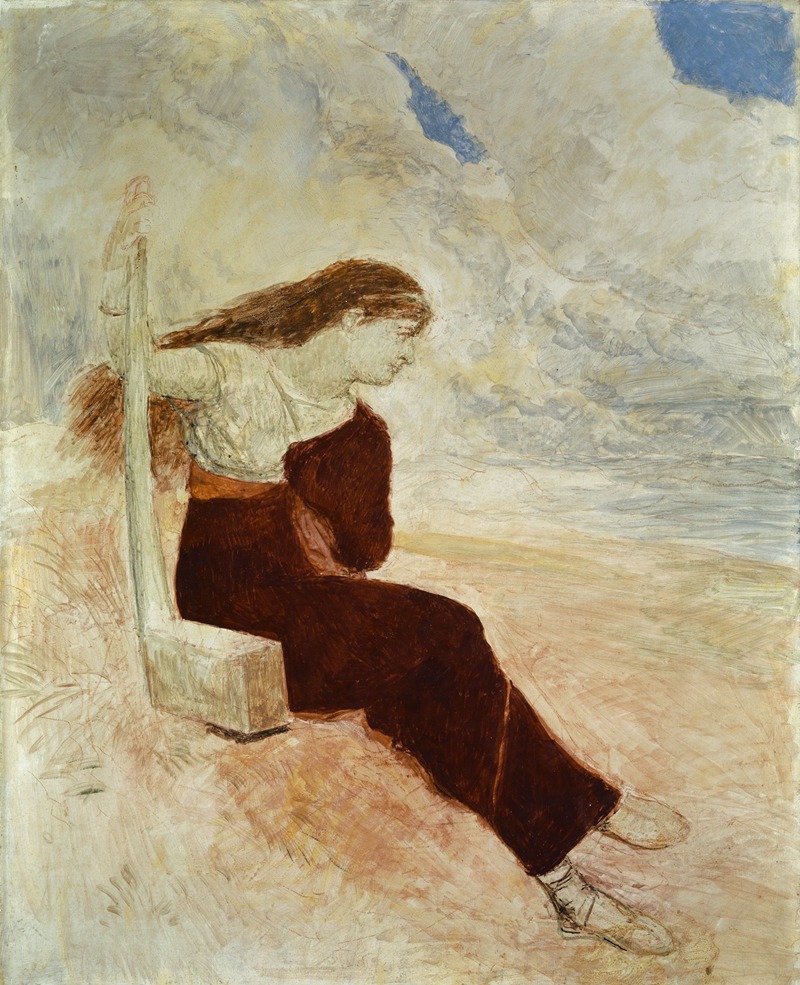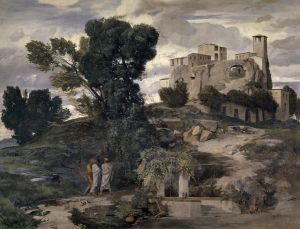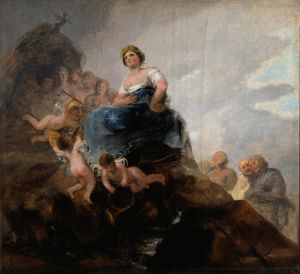
Sappho
A hand-painted replica of Arnold Böcklin’s masterpiece Sappho, meticulously crafted by professional artists to capture the true essence of the original. Each piece is created with museum-quality canvas and rare mineral pigments, carefully painted by experienced artists with delicate brushstrokes and rich, layered colors to perfectly recreate the texture of the original artwork. Unlike machine-printed reproductions, this hand-painted version brings the painting to life, infused with the artist’s emotions and skill in every stroke. Whether for personal collection or home decoration, it instantly elevates the artistic atmosphere of any space.
Arnold Böcklin's painting "Sappho" is a notable work by the Swiss symbolist artist, created in 1862. Böcklin, renowned for his mythological and fantastical themes, often drew inspiration from ancient history and literature, and "Sappho" is no exception. This painting reflects his fascination with classical antiquity and his ability to infuse his subjects with a sense of mystery and emotion.
"Sappho" depicts the ancient Greek poetess Sappho, who lived on the island of Lesbos around the 6th century BCE. She is one of the most famous lyric poets of ancient Greece, celebrated for her passionate and personal poetry, which often explored themes of love and desire. Although much of her work has been lost over time, Sappho's legacy endures, and she remains a symbol of artistic inspiration and emotional depth.
In Böcklin's portrayal, Sappho is often shown in a contemplative pose, capturing the introspective and emotive qualities associated with her poetry. The painting is characterized by Böcklin's distinctive style, which blends realism with elements of fantasy. His use of color and light creates a dreamlike atmosphere, inviting viewers to delve into the emotional world of the poetess.
Böcklin's interest in Sappho may have been influenced by the 19th-century Romantic movement, which saw a resurgence of interest in classical themes and figures. During this period, artists and writers often looked to antiquity for inspiration, seeking to capture the beauty and complexity of human emotions through the lens of myth and history.
The painting "Sappho" is part of Böcklin's broader body of work, which frequently explores themes of mythology, nature, and the supernatural. His paintings often feature dramatic landscapes and figures that seem to exist in a realm between reality and imagination. This approach is evident in "Sappho," where the poetess is depicted in a setting that evokes both the real and the ethereal.
Böcklin's work, including "Sappho," has been influential in the development of Symbolism, a movement that sought to express the ineffable and the mysterious through art. His paintings are known for their rich symbolism and their ability to evoke deep emotional responses from viewers. "Sappho" exemplifies these qualities, as it invites contemplation of the poetess's inner world and the timeless nature of her art.
Today, Arnold Böcklin's "Sappho" is appreciated not only for its artistic merit but also for its contribution to the enduring legacy of Sappho as a cultural and literary icon. The painting serves as a testament to Böcklin's skill in capturing the essence of his subjects and his ability to transport viewers to a world where history, myth, and emotion intertwine.


















